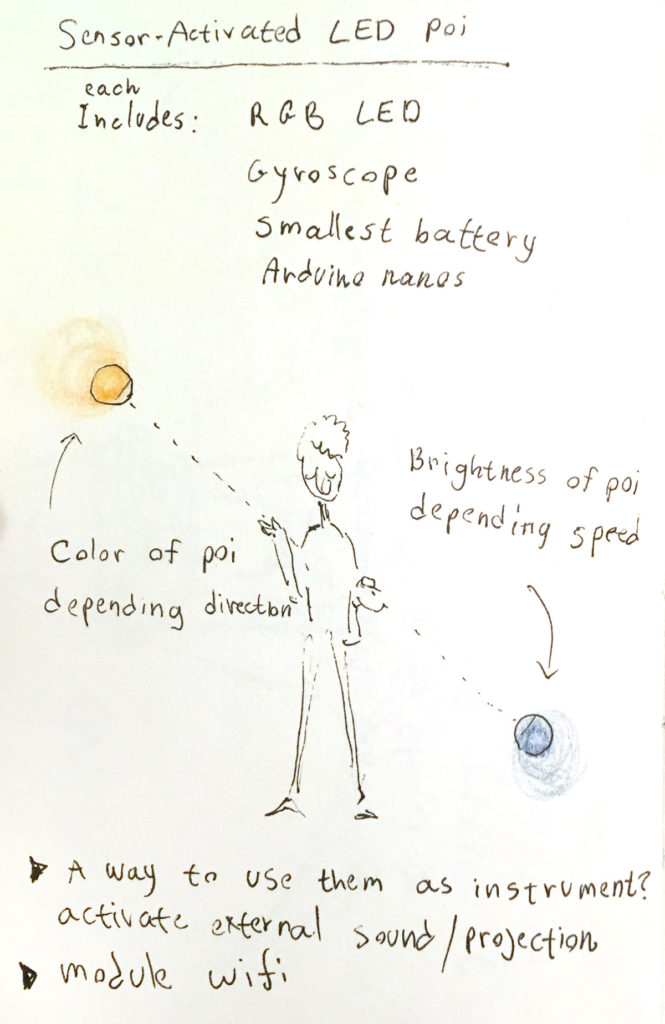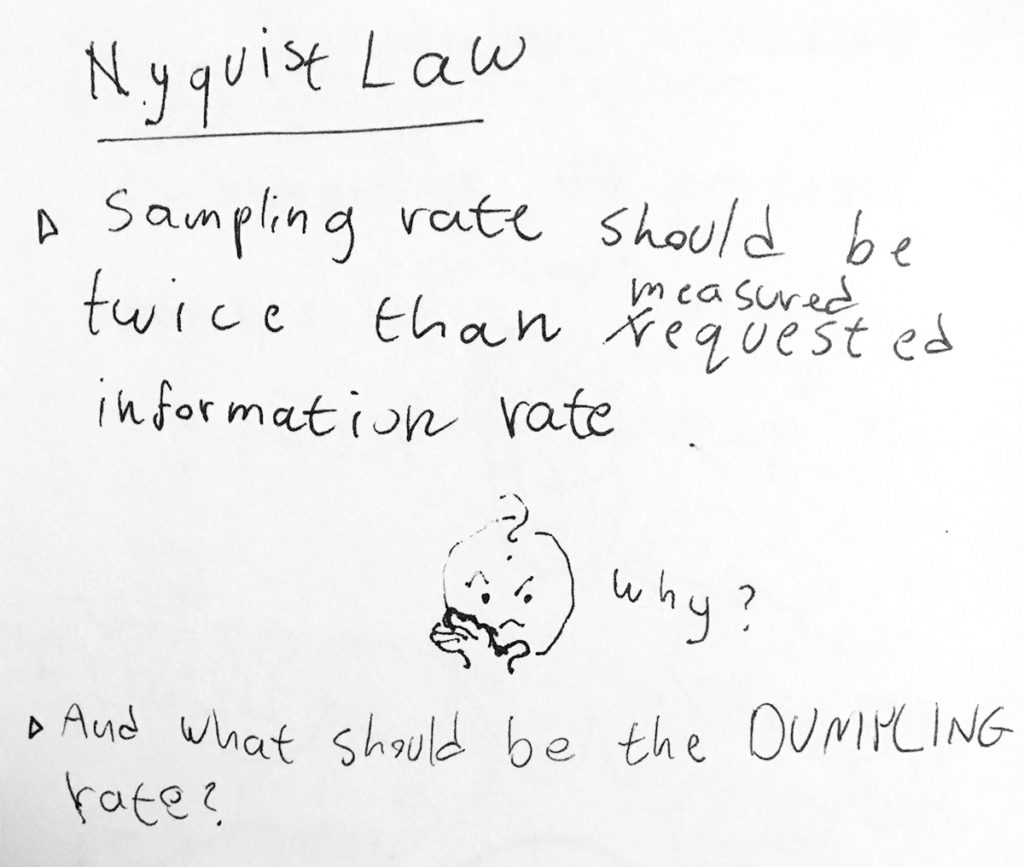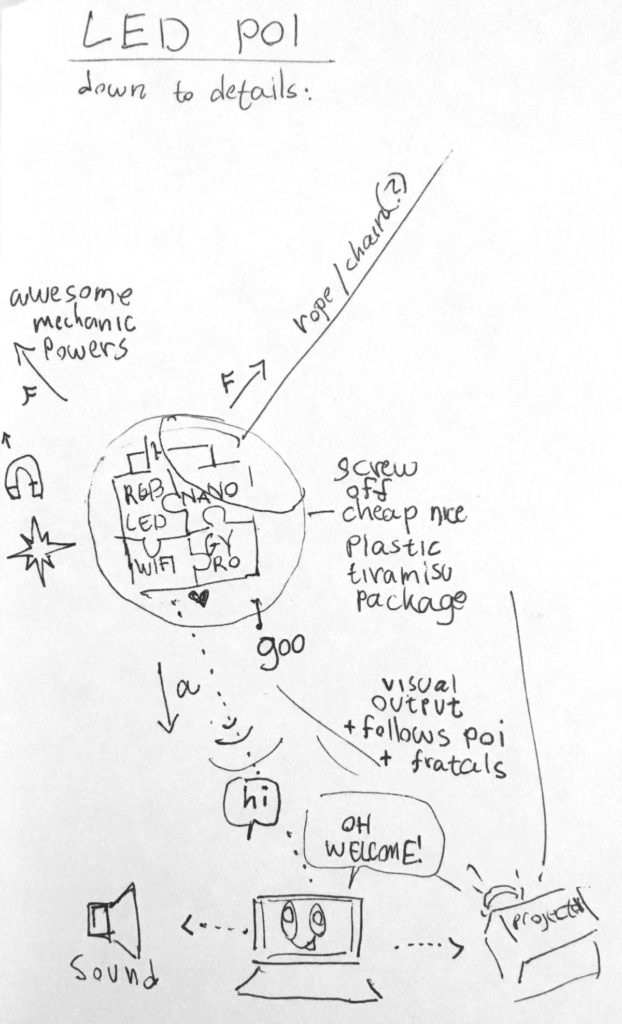Intro to Physical Computing Final Project Proposition: a Playful Performance Art Instrument
Recap
Following the class presentation of our midterm project Albino Bat, final tweaks to the code were made. A smooth but quick fade was assigned to the light-up wings, depending on the magnetic field rather than the facing (angle) of the stick. In practicality, this fine-tuning has turned the Albino Bat into a delightful interface. After a very short learning period, I figured out and got used to the precise hand gestures turning the wings on and off. I became so in tune with this cyborg extension of my body I could dance with it freely, jamming to the music playing at ITP’s Halloween party, illuminating my surroundings selectively.
Albino Bat in action looked great, felt great, and was given positive feedback of awe and pleasure. The psychological cause for that, I assume, was the actually flattering evenly diffused light the wings spread. It made the person standing in front of the Albino Bat look and feel like a supermodel in the spot light.
The footage-capture that evening tuned out to be a failure. The placement of the cellphone produced unusable footage, unfortunately. Overlooking this detail, Albino Bat was a success, filling me in with enthusiasm about my following project, which I’d be happy to live in the same realm, of performative body-extensions.
Intro
Poi is a hobby I picked when needed some re-alignment. It’s similar to juggling but easier: you don’t lose your balls since they’re connected to your hands with strings. Holistically, playing poi improves fitness, balance and concentration. The movement can vary between playful to meditatively repetitive. Culturally rooted in Polynesia, the meaning of the word poi in the Maori language is simply “ball on a string”. Mechanically, they’re fascinating to analyze and draw data from.
Objectives
- Build a next generation poi, that’ll ripple space and time with it’s electric features
- Receive mechanic data from the poi’s motion. A gyroscope could potentially measure the poi’s height from the ground, it’s acceleration on 3 axis, and it’s position in regard to earth’s magnetic fields
- Use the data to control light pattern inside the poi
- Possibly: generate graphic patterns that correspond with the poi’s movement. Ideally fractals. Ideally tracing the poi’s movement.
- Possibly: generate music using the poi as an instrument. I speculate that the poi’s rhythmic movements can be translated into electronic music. Moreover, poi and electronic music exist in the same sphere, of electronic music festivals. Marrying the two would be organic
- Ensure a sturdy enough mechanism to withstand rapid movements and some banging
- Create audio-visual effects so impressive even a beginner poi spinner can make it look and sound like a pro
- Craft the poi with attention to each and every detail to fabricate maximally quirky toy of art
Concept
Research
Short research online reveals that attempts to create a musical instrument out of poi have been done before. It also reveals that’s there’s interest and market for this seemingly esoteric performance art.
- The Orbitar is a similar project from several years ago. It has detailed documentation that can assist with this project
- The Mpoi is another example controlling sound
- Hyperion Poi is a gorgeous product generating sophisticated patterns with a series of LEDs. Made of aircraft-grade materials, costing 420$, it has a typical battery life of 1-2 hours
Talking to some expert friends, I received a tip regarding Nyquist law.

Plan

To be continued and developed. I would love to hear your opinions on the precise components I shall include.

